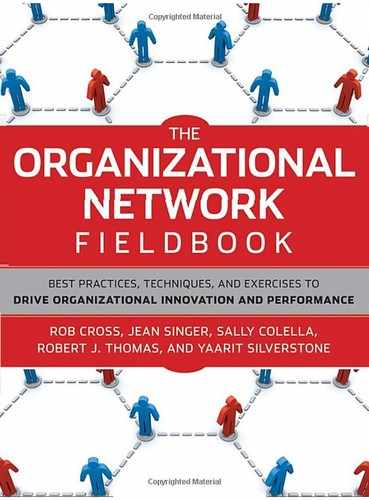25.4. Example 4: Uncovering Organizational Norms
A relatively small investment bank, which had long considered itself a "scrappy underdog" among competitors, established an ambitious growth strategy that called for new senior-level hires. After a couple of these new hires derailed within months, the COO realized that the firm needed to get better at bringing in new blood. An onboarding program was born.
One goal of the new program was to "grow the culture as we grow the firm." In other words, we wanted to maintain the bank's core values while adapting to the changing internal and external landscapes. This was easier said than done. The bank was insular: the executive team's bonds had been forged by triumphing over adversity on several occasions. And the culture was defined by unwritten rules that were second nature to insiders, many of whom had never worked anywhere else. People hired into the bank, especially at senior levels, reported feeling "new" years into their tenure—that is, if they lasted more than a year.
To address this cultural challenge, we designed an exercise for our onboarding program that encourages dialogue about the bank's unwritten rules between members of the Executive Committee (EC) and recently hired senior vice presidents and managing directors. We have also incorporated this Organization Norms exercise into leadership development programs.
25.4.1. The Exercise
The exercise takes 45 minutes to an hour. It works best with at least 30 participants from various regions and businesses, who have been with the bank for at least three months and no more than nine. Larger groups—up to 60—are more challenging to facilitate, but the energy is great. People come away from the exercise reporting that they "get the firm" in a way that eluded them before. Hearing an EC member tell stories that had shaped the culture and seeing colleagues react to aspects of the culture is not only comforting but also clarifying, helping participants "see the forest for the trees." Many participants are impressed by the level of candor the bank encourages in this exercise, which they have not necessarily experienced elsewhere.
To frame the exercise, the facilitator begins by noting that culture is not static; it can evolve through conversation and feedback. The facilitator explains that participants will be part of that conversation: the themes and topics that emerge during the exercise will be brought to the entire EC by the members present at the exercise.
Participants get into groups of six to nine members, representing certain regions or businesses, and stand at a flip chart. Each group is given 15 to 20 minutes to list two types of unwritten rules: things you must do to succeed at the bank and things that will derail you. The group must then choose its top two items from each category. Participants are instructed to leave political correctness at the door and not to try for consensus—some things might show up on both sides of the chart. Discussion is generally robust, to say the least.
Then, in a session that lasts about 30 minutes, a member of the EC stands by each flip chart, along with a spokesperson for each group. The facilitator moves from group to group, asking each spokesperson to comment on the group's top two items from each category. The facilitator encourages people to be crisp ("use headlines"). The EC member—who has been coached beforehand—listens, asks questions, interjects stories, and adds his or her perspective. The facilitator's role is to encourage and manage dialogue. It is a delicate role and especially important if the EC member uses firm-specific jargon, assumes knowledge that the group might not have, or, most important, becomes in any way defensive.
To close the exercise, the EC member and the facilitator summarize key takeaways that will be shared with the full committee, commenting on what was similar and different across groups. The EC member encourages participants to continue the conversation and to make unwritten rules transparent, especially when they get in the way of shared goals.
We have found that all participants in this exercise—both new hires and EC members—benefit. EC members gain an understanding of recent hires' perspectives on the culture and can see how the culture is—or is not—helping new talent achieve the goals the bank sets for them. And recent hires get a better feel for the culture and its roots, as well as an understanding of the executive team's aspirations for change.
